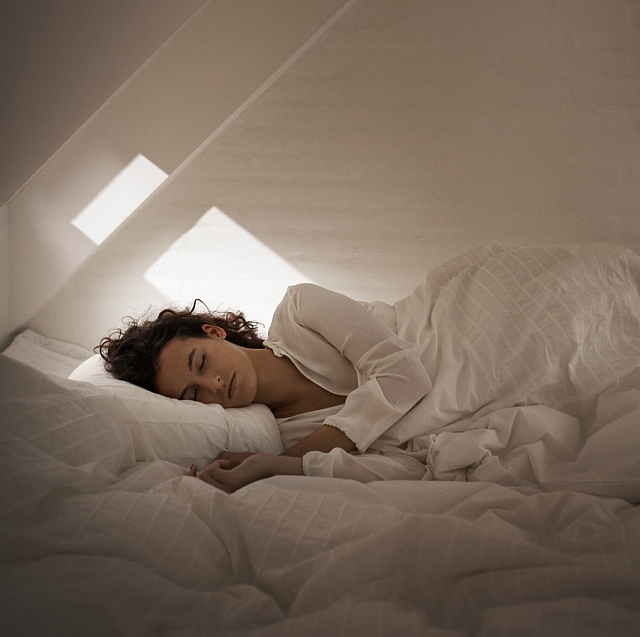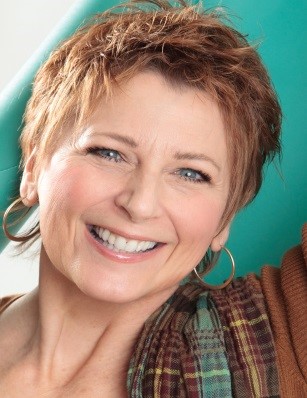
By Deborah Burnett, ASID, CMG, LGC, AASM – BENYA BURNETT CONSULTANCY, USA
Science is beginning to explore the concept that aging is not a measure of time but rather an accumulation of naturally occurring periods of light and dark. Noticeable life passage points such as the emergence of our developing genitals, decreasing visual acuity marking entry into middle age, and getting up to pee several times throughout the night, are now becoming understood to be related to the passage of time noted by ambient conditions of seasonality and 24 hour light /dark periods. Accumulated lighting exposure from the sun, ordinary room lighting, or even from electronic gadgets and computers, light itself is now emerging as a key element involved with the aging process via the circadian system. And with this understanding comes a new found practice area where design will ensure a smooth transition throughout the lifelong aging process.
AGING versus Old AGE
At its very core, aging is a measurable biological process centering on survival, reproduction, and human energy management. With prime reproductive periods established between the onset of puberty and the mid 20’s, scientific researchers have now demonstrated that the process of aging, known as sentience, starts to become evident shortly after the 26th year. By this time, researchers are able to notice degrading changes in brain structures and intercellular communication speeds. As the years tick by, our genes are also responding to the aging process: predictable age-related visual changes, new patterns of fat distribution emerge, decreasing muscle strength, and a tendency to forget where we placed our keys is commonplace among the graying generation.
A new emerging definition of “old age” is taking hold as we recognize that aging is not a marking of chronological years but rather that of a time line measurement of deteriorating physiological and neurological conditions most of which are brought about by lifestyle and environmental conditions1. Additionally, researchers from the International Institute of Applied Science have offered the view that aging is multidimensional and suggest that by “reconceptualizing population aging to incorporate how people actually function throughout their lifespan” we will be able to provide a foundation of a more realistic view of population aging. For the design community, this ground breaking study will open a door for providing biologically-considerate built environments which go beyond design practice standards. Going forward will first require an understanding of how the body registers time, and then a concerted effort for the application of that knowledge in providing for built environments appropriate for ALL aging populations; from cradle to grave literally.
Circadian System: the basics of life
The human circadian system is fundamental to human health, wellness, and survival. It is instrumental for timely regulation of all growth and developmental processes including those governing physical strength, fighting of disease and the aging process. It is a complex system consisting of the sleep wake cycle, the innate circadian rhythm, and a master biological pacemaker for synchronizing various processes, neurochemical expression and physiological functions including: blood pressure, heart rate, metabolic function, muscle strength, balance control, body temperature and urine output.2 The primary purpose of the circadian system is to position the body and brain for anticipating, adapting and responding to environmental conditions to ensure a vital reproductive passage into advancing years.
Although numerous environmental signals are strong enough to influence the circadian rhythm and sleep/wake rhythm, the signal of ambient light will directly signal the master clock. The primary light alignment source is the dynamic rhythm of light’s changing patterns throughout the day and varying stages of darkness at night3. Entering thru the skin and specialized cells in the eyes, the photometric properties of direction, timing, intensity and spectral composition are vital for accurately signaling epigenetic response, the circadian system and neurochemical response necessary to maintain health and fight disease4,5. This naturally provided redundant and reciprocitus pattern of light and dark accompanied with predicable ambient temperature variations throughout a 24 hour period ensures appropriately timed physiological response, targeted genic expression, and neurochemical release for a direct bearing on lifespan, health and wellbeing. Additionally, the variation between the naturally occurring light and dark signals also impacts Vitamin D production and secondary biological clocks located throughout every tissue, organ, and cell including red blood cells. Recent discovery is also demonstrating that even age- related hampered bladder contraction strength contribute to the control of the master clock; a possible explanation as to why aging bladders pose not only an incontinence problem but also contribute to decreasing sleep quality6. Unfortunately, recent and evolving scientific evidence has demonstrated that ALL light sources, including ordinary household light bulbs, streetlights, computer lighting and even the light from cellphones and TV’s, have the same impact on the circadian system as do naturally provided sunlight and darkness at night. For most, this means that our modern day light filled 24/7 lifestyle is in direct opposition of what the body and brain need to stay healthy and age gently.
Science is also demonstrating that even collagen, elastin and fibrin, simple biopolymers responsible for keeping our skin beautiful and blood vessels healthy, are also under circadian regulation and impacted by ambient lighting conditions. With the knowledge that all light sources including daylight, moonlight, street lighting, and ordinary office lighting are capable of direct influence upon the master pacemaker it should come as no surprise to learn that a major consideration of the aging process, blood vessel and platelet production, are also subject to light signals via the sleep process7.
SLEEP: a basic survival need
A major function of the circadian system is to provide for sleep. A process directly linked to ambient conditions of light and dark, sleep is at the top of our human survival needs with physiological and genetic functions aligned for light activated patterns of activity, rest, growth and repair. Simply explained, sleep is an inverse function to the circadian rhythm consisting of two phases throughout a 24 hour day: the PROCESS of sleep occurs during the day so that the ACT of sleep can happen at night. To achieve a well-balanced and efficacious sleep requires that humans are exposed to both bright lighting conditions during the day and a void of light at night. For design professionals interested in making a difference in the aging process, it is as simple as providing for a good night’s sleep using these lighting tips and guidelines:
- For those occupants confined to indoor work or residential environments plan for extensive daylight exposure from three or more directions which allows for high levels of natural light (min 1250 lux) to penetrate deep within the space for at least 2 hours throughout the morning and early afternoon hours.
- Avoid strong sunlight patterns on floors by positioning luminaires which reflect light off of walls and ceilings using diffusing materials to even out the daylight and create visual interest. This design feature will enhance visual uniformity, reduce glare and also provide a circadian benefit via motion reception of light throughout the course of a day.
- Engage in daylight harvesting ( the process of switching off electric lighting to take advantage of natural light ) whenever possible and only integrate electric light sources for use on cloudy / overcast days to compensate for lost daylight spectral power distribution (SPD) and /or provide a balanced light in areas where daylight penetration is lacking. A full complement of tunable white light sources ranging from 1600 CCT to 6500 CCT should be made available and properly commissioned to match for seasonality, latitude, and chronological suitability. Programming should also allow for the transitioning between daylight and dark with 2400 CCT or lower selected for use after sundown.
- In residential, correctional, and healthcare projects, provide for red wavelength light sources 630 nm or higher to be used for wayfinding and nocturnal-visit bathroom lighting whenever possible. Avoid broad band amber light sources with wavelengths below 630 nm whenever possible as these may negatively affect both the visual and non-visual photoreceptors during the evening hours thus impacting sleep, endocrine production, and immune system repair processes.
1. Sanderson, W. C. and Scherbov, S. The Characteristics Approach to the Measurement of Population Aging. Population and Development Review, 2013; 39 (4): 673 DOI: 10.1111/j.1728-4457.2013.00633.x
2. Cajochen, C. et al. ( 2005) High Sensitivity Of Human Melatonin, Alertness, Thermoregulation, And Heart Rate To Short Wavelength Light. The Journal of Clinical Endocrinology & Metabolism March 1, 2005 vol. 90 no. 3 1311-1316
3. Duffy JF, and Wright KP (2005 ) Entrainment Of The Human Circadian System By Light. J Biol Rhythms 2005;20:326-38.
4. Stringari, C. et al. (2014) In Vivo Single-Cell Detection of Metabolic Oscillations in Stem Cells. Cell Reports, 2014; DOI:10.1016/j.celrep.2014.12.007
5. Janich, P. et al. (2011) The circadian molecular clock creates epidermal stem cell heterogeneity. Nature 480, 209–214 ; DOI: 10.1038/nature10649
6. Wu, C. et al. (2014) Local receptors as novel regulators for peripheral clock expression. The FASEB Journal, 2014; DOI: 10.1096/fj.13-243295
7. Scheer, F. A. J. L. et al. (2011) The Human Endogenous Circadian System Causes Greatest Platelet Activation during the Biological Morning Independent of Behaviors. Plos ONE 2011 , 6 (9); DOI: 10.1371/journal.pone.0024549




